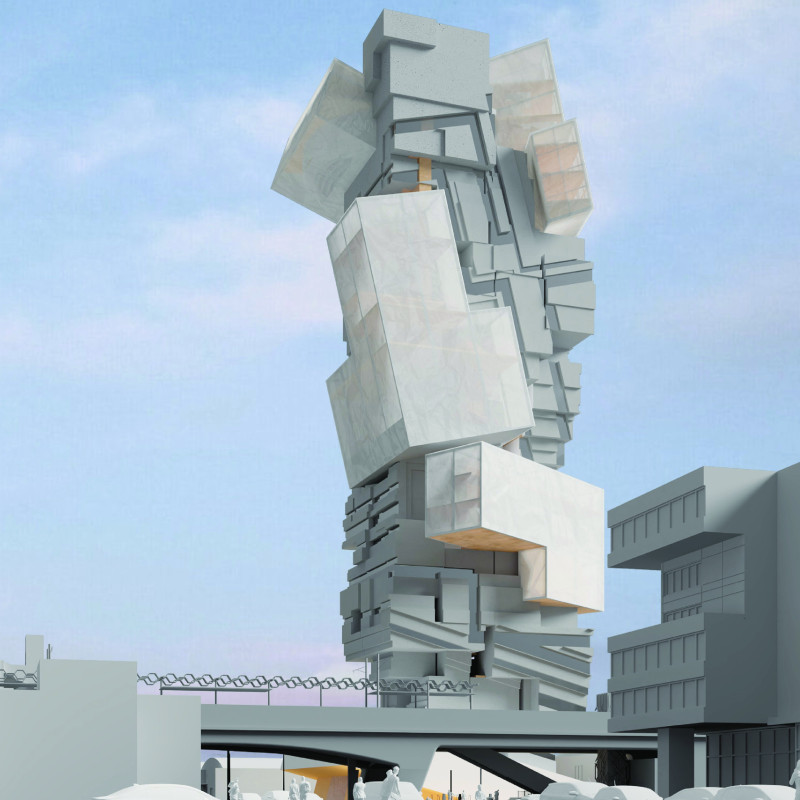5 key facts about this project
The Social Affordable Housing as Public Infrastructure rethinks the typical residential model by placing significant emphasis on public space within its design. Located at the intersection of Lobeckstraße and Gitschiner Str, the housing aims to meet the functional needs of urban living while also encouraging community interaction. This approach challenges the traditional focus on efficiency in housing development, aiming to create a lively environment that promotes social relationships among residents.
Architectural Concept
The design centers around a critique of standard housing layouts that often keep public and private spaces separate. By incorporating public programs directly into the housing structure, the proposal allows for movement that blends circulation with social activities. This fragmentation of spaces seeks to remove the notion of leftover public areas, instead elevating them as vital components that facilitate engagement between residents and their community.
Spatial Organization
Housing is organized in a way that encourages both separation and connection. Public spaces are spread throughout the building, creating varied pathways for movement and interaction. This layout helps residents navigate easily between private spaces and communal facilities. Amenities like artist studios, auditoriums, gyms, and recreational areas are included to underline the importance of offering diverse options for social engagement.
Contextual Integration
Situated near public amenities, such as the Armenian park and outdoor swimming pool, the design enhances the relationship with its urban setting. It acts as a link, bringing residential life closer to city infrastructure while ensuring easy access for residents. The careful planning of the development invites community involvement and fosters a stronger sense of belonging among inhabitants.
Design Detail
The focus on integrating public spaces is evident in the careful layout that promotes both interaction and relaxation. Public areas are designed to create inviting atmospheres. By prioritizing these connections, the design shows that housing can serve not only as a place to live but also as a foundation for social connection within a community.



















































